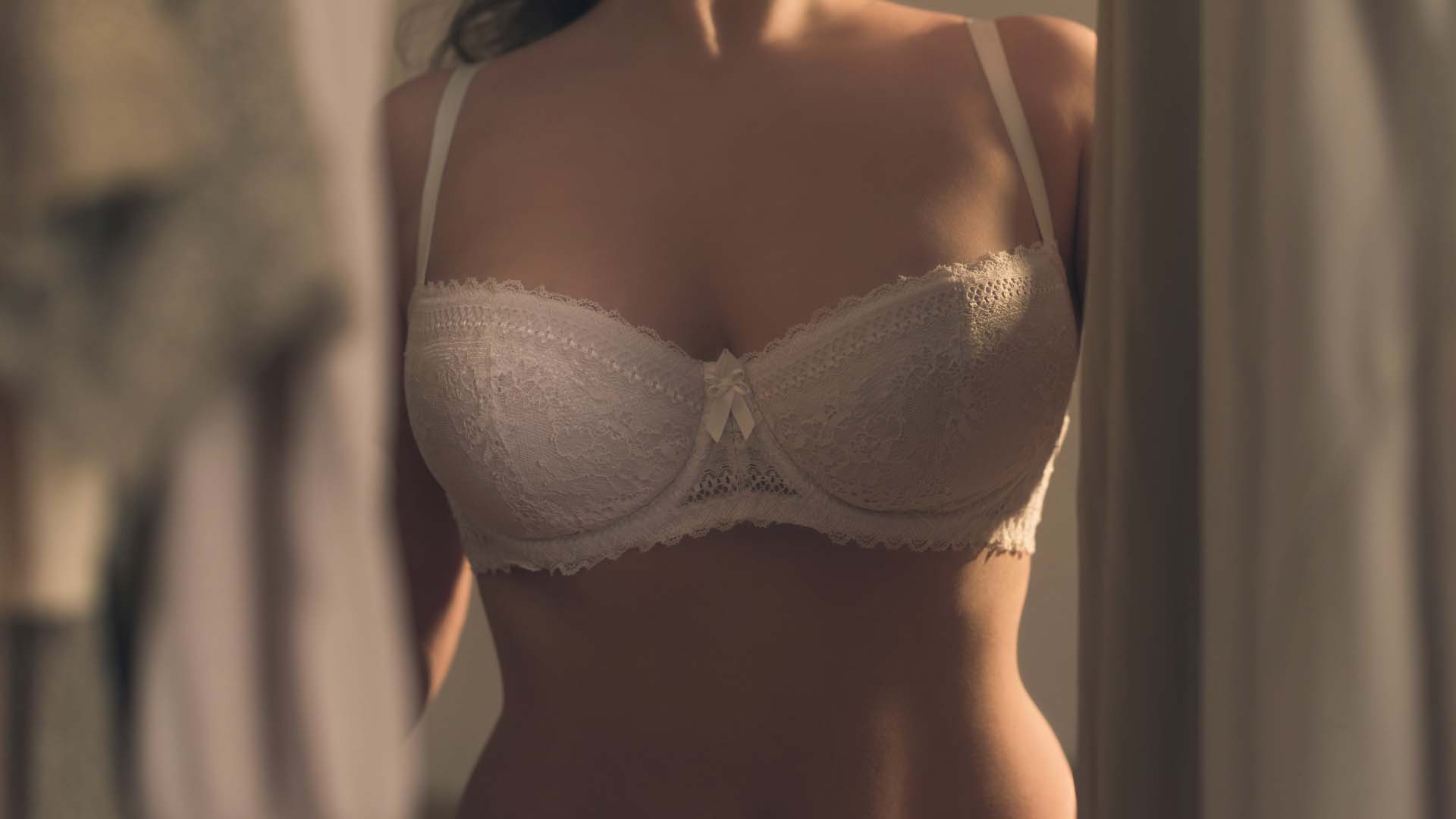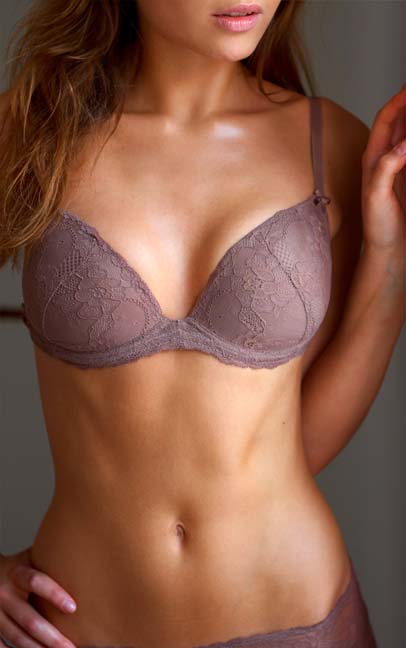
Breast Augmentation in Philadelphia

Introduction to Breast Augmentation
Get the breasts you’ve always dreamed of!
Despite the stereotypes associated with Breast Augmentation, there are many different reasons women seek implants. The one things that all women inquiring about Breast Augmentation procedures have in common is the desire for an aesthetically pleasing figure, with breasts proportionate to their body type.
The surgery is performed by Dr. Ronald Lohner, who has been voted a Philadelphia Top Doc for 13 consecutive years. Dr. Lohner specializes in performing breast augmentations in Philadelphia for patients from around the world. Our practice specializes in meeting patient expectations while maintaining excellence in safety and education. Below, we’ve included more information about the procedure and frequently asked questions.

What is a Breast Augmentation?
Let’s start with the basics
Breast Augmentation, also known as Breast Enlargement or Augmentation Mammoplasty, is a surgical procedure designed to add volume, form, and symmetry to the chest. Using either saline or silicone implants, breast implants can dramatically improve the shape and size of a woman’s breasts. Breast augmentation remains the most popular cosmetic surgery procedure performed in Philadelphia.

Dr. Lohner’s Breast Augmentation Expertise in Philadelphia
- Has performed hundreds of successful breast augmentation procedures over the last two decades, helping patients from Philadelphia and around the world feel more confident in their appearance.
- Named a Philadelphia Top Doc for 17 consecutive years, recognized for his dedication to surgical excellence and patient care.
- Earned his medical degree from the University of Pennsylvania School of Medicine, one of the top medical schools in the country.
- Completed a general surgery residency at NYU Medical Center, followed by a plastic surgery residency at the University of Pennsylvania, where he honed his expertise in cosmetic breast procedures.
- Board-certified by the American Board of Surgery and the American Board of Plastic Surgery, demonstrating a commitment to the highest patient safety and care standards.
- A proud member of the American Society of Plastic Surgeons and The Aesthetic Society.
Breast Augmentation At-a-Glance
- Surgery Time: Approximately 1 to 1.5 hours
- Price: For an accurate cost, please inquire during your consultation
- Recovery: Most patients return to light activities within 3–5 days, with full recovery in 4–6 weeks
- Results: Initial results are visible immediately, with final shape and softness settling within 3–6 months
9 Top Reasons for Breast Augmentation
As one of the leading Philadelphia breast augmentation practices, we’ve had the luxury of seeing patients for the last two decades. We’ve included some of the top reasons why people get breast implant surgery:
- Small, misshapen breasts
- Asymmetrical breasts (one larger than the other)
- Lost breast volume lost after childbirth/breastfeeding
- Loss of breast shape after a dramatic weight loss
- Depletion of chest volume due to the normal aging process
- Poorly fitting t-shirts, blouses, swimwear
- Less than optimal results from a previous breast augmentation
- Low confidence and self-esteem due to body image
- Lack of a proportionate figure
9 Top Reasons for Breast Augmentation
As one of the leading Philadelphia breast augmentation practices, we’ve had the luxury of seeing patients for the last two decades. We’ve included some of the top reasons why people get breast implant surgery:
1. Small, misshapen breasts
3. Lost breast volume after childbirth/breastfeeding/weight loss
5. Depletion of chest volume due to the normal aging process
7. Less than optimal results from a previous breast augmentation
9. Lack of a proportionate figure
2. Asymmetrical breasts (one larger than the other)
4. Loss of breast shape after a dramatic weight loss
6. Poorly fitting t-shirts, blouses, and swimwear
8. Low confidence and self-esteem due to body image

Gallery
Results speak for
themselves.

Who Are the Best Candidates for Breast Augmentation?
Any woman frustrated with the size and shape of her breasts or who feels she may have deflated breasts may be a good candidate for this procedure. Ladies with a chest proportionate to their build, breasts different in size from each other, or who are experiencing a natural decrease in breast volume can benefit from an augmentation procedure. Excellent results are observed in patients of all ages, including those aged eighteen and older. As with all cosmetic surgery patients, women should be in generally good health and have realistic expectations for their upcoming breast enhancement procedure.
What’s the First Step?
Patients considering breast augmentation in Philadelphia should begin by doing extensive research. They should explore the benefits, risks, and recovery time associated with this procedure, as well as the various implant options available. Excellent resources can be found on the Internet. If a breast enlargement still sounds like the right procedure, patients should schedule a consultation appointment with Dr. Lohner.
The surgeon will use the initial appointment as an opportunity to get to know the individual patient’s needs and desires. Dr. Lohner will review the medical history and do a brief physical examination. This consultation is the perfect opportunity to ask any questions you may have after researching the procedure on your own. After explaining the procedure, the techniques available, and the recovery commitment, Dr. Lohner will help the patient visualize the results of their cosmetic procedure. If this is the right procedure for you, a unique surgical plan will be developed.
Preparing for Breast Augmentation Surgery?
Once the surgery has been scheduled, it will be time to prepare for the procedure. A patient should carefully read all preoperative and postoperative instructions provided by Dr. Lohner.
Patients should also keep the following tips in mind for a smooth surgical procedure and stress-free recovery period:
1. Ask questions
Do not be afraid to ask questions. If you have any questions or concerns, contact Lohner Plastic Surgery immediately.
3. Scheduled Transportation
After your surgical procedure, you will need a ride home. If necessary, arrange transportation assistance from the surgical center for all follow-up appointments.
5. Take Time Off
Appropriate recovery time is necessary for proper healing. Take the recommended amount of time off from work or school, allowing plenty of time for rest and relaxation.
7. Mark the Calendar
Schedule the follow-up appointments so that you can take an appropriate time off work. Do not put off these important checkups with Dr. Lohner, as they are vital to your recovery.
9. Know What to Tell Others
People close to you will likely notice that something has changed, either during the recovery process or once the results become apparent. Be prepared with an explanation when needed.
2. Pick Up Prescriptions Before Your Procedure
It is best to pick up your pain medications prior to your surgery. These should be on hand to start immediately after your procedure.
4. Buy Supplies
Gather books, magazines, extra pillows, icepacks, and simple foods to have on hand after surgery. This will ensure a smooth, peaceful recovery.
6. Gather Important Numbers in a Central Location
In case of an emergency or if you have any questions for Dr. Lohner and his staff, please collect all important phone numbers and insurance cards in a readily accessible location. Share this location with anyone assisting you during your recovery.
8. Arrange For Assistance
Have a close friend or family member stop by daily to assist with minor chores or to prepare a meal. It is common for patients to be sore and tired the first couple of days after surgery; the extra help will be greatly appreciated.
10. Relax
Dr. Lohner will walk patients through their surgical journey. As long as the appropriate preparations are made, the procedure should provide life-changing results.
Saline Vs. Silicone Implants
Saline Implants: Saline implants were first introduced in the late 1960s. Since that time, they have provided safe, beautiful breast enhancement results. Saline solution implants provide a round, full, firm feeling breast, and more upper pole fullness compared to silicone. The implants are placed in the breast while empty, then filled once in position, thus requiring a smaller incision. Saline implants are typically less expensive than silicone implants. The failure of saline implants is much easier to detect than that of silicone implants, as they deflate.
Silicone Implants: Silicone Implants are by far the most popular choice. After being removed from the market for several years, silicone implants have been reintroduced to cosmetic surgery and proven to be 100% safe for all women. The implants are composed of a soft, silicone gel placed pre-filled into the breast pocket. Silicone implants appear and feel more natural than saline implants. These implants can be placed either above (Subglandular) or below the muscle (Submuscular). Silicone has a lower deflation rate than Saline and a lower chance of a rippling effect.

Submuscular Vs. Subglandular
Submuscular Placement: Implants placed submuscularly (under the muscle) offer several benefits, including a lower risk of noticeable rippling and a reduced likelihood of capsular contraction. They also provide greater upper pole fullness and look more natural than those over the muscle. The only downside of submuscular implants is the greater chance for animation distortion (change of breast shape with movement).
Subglandular Implants: Implants placed subglandularly (over the muscle) can provide patients with the often desired round, augmented look. There is a lower chance of animation distortion with sub-glandular placement, and patients report slightly less postoperative discomfort. Unfortunately, implants placed over the muscle require a large amount of natural breast tissue to be present prior to surgery, and noticeable rippling is more likely to occur. A postoperative massage program is recommended for subglandular implants.
Volume, Shape, and Texture
“Implants can be found in both round and anatomic shapes.”
- The volume of an implant, whether saline or silicone, is noted in cubic centimeters (cc), not cup size. A large selection of different volumes is available, allowing women to be very specific about the size of breast they prefer. The use of sizers in the office is effective in assessing the patient’s desires.
- Implants are available in both round and anatomical shapes. Round implants are used most often and appear the most natural and symmetrical. Anatomic implants (teardrop-shaped) are the best implant option for patients who want shape when little breast tissue is present. This implant, however, has a greater tendency to rotate, looking unnatural.
- Smooth implants move very well within the breast pocket, making them the most popular. Textured implants were originally thought to reduce the chance of Capsular Contraction, although this is not always the case. Textured implants have a higher chance of rippling and unnatural movement.
What to Expect on the Day of Breast Augmentation Surgery?
All breast augmentation procedures are performed as outpatient procedures, conducted under general anesthesia. Depending on the exact procedure, the surgery typically takes between one and one and a half hours to complete.
To begin the procedure, Dr. Lohner will make an inframammary incision (along the breast crease) or a periareolar incision (around the areola). After incisions, Dr. Lohner will place the implants above or below the muscle. Once the implant has been properly situated, Dr. Lohner will place buried dissolving sutures to promote appropriate healing.

Potential Risks from Breast Augmentation
While breast enlargement is considered safe and effective, it is an invasive procedure, and there is a small chance of complications. If potential complications arise, common complications may include: excessive bleeding, delayed wound healing, loss of nipple sensation, asymmetry, and very rarely, implant infection. Choosing a board-certified surgeon, such as Dr. Lohner, will reduce the chance of complications occurring.
Breast Augmentation Recovery
Patients can expect recovery to take between five and seven days. Subglandularly placed implants (above the muscle) will require only a few days of recovery, while Submuscular (under the muscle) implants will take closer to a week. Initially, women may experience mild to moderate pain. Dr. Lohner will prescribe the appropriate pain medications and muscle relaxants to keep patients resting comfortably at home. A pain pump is often utilized. While bruising and swelling are common, these will subside over the first three to five weeks.
For the first few days, the breasts may be extremely sensitive to stimulation. Additionally, temporary numbness around the nipple may also be experienced. It is normal for women to experience tightness across the chest as their body adjusts to the new implants. A surgical tape, support garment, or special bra must be worn over the following several weeks to promote healthy healing.
Generally, patients feel well enough to return to work in three to five days. Strenuous activities should be postponed for a full four to six weeks after surgery; however, light aerobic exercise can be initiated two weeks after surgery. A dramatic improvement will be noticeable immediately after the surgery. However, after the swelling has completely resolved and the breasts have fully healed, typically within two to three months, patients will be able to appreciate the final result of their augmentation.
Tips for Recovery
Recovery after breast augmentation is all about rest, care, and following Dr. Lohner’s post-op instructions. Expect some swelling and tightness early on—this is completely normal.
Take it easy for the first few days, stay hydrated, and wear your surgical bra as directed to support healing. Gentle walking is encouraged to keep circulation moving, but hold off on strenuous activity until you’re cleared. Sleeping on your back with your upper body slightly elevated can ease discomfort, and keeping your incisions clean is key.
Stick to your follow-up appointments so Dr. Lohner can monitor your progress and ensure everything is healing as it should, giving you natural-feeling results.
Breast Massage
The breast massage is an integral part of the healing process for implants placed above the muscle. Massages might also be helpful for submuscular implants, but are not absolutely necessary. This simple step will significantly reduce the likelihood of capsular contraction or scar tissue formation around the breast implant. For the next three to four weeks, after surgery, your job will be to gently massage each breast for about one minute, three times a day. Thereafter, for the life of your implants, massaging your implants daily will continue to decrease the possibility of future Capsular Contracture. Dr. Lohner will explain massage techniques before your surgery and review them during your follow-up appointment.

How much does Breast Augmentation Cost in Philadelphia?
The exact cost of your breast augmentation in Philadelphia is specific to each patient and varies according to the patient’s choice of implant. Lohner Plastic Surgery accepts financing through CareCredit. For a more accurate estimate of the cost of your surgery, please call (610) 822-9136 or use our consultation request form to schedule your consultation.
Schedule Your Consultation
Dr. Lohner has been delivering exceptional breast augmentation results to patients in Philadelphia for over 20 years. He is Board-Certified in Plastic Surgery and General Surgery. If you’d like to schedule an initial consultation, please contact us today! We look forward to helping you achieve the breasts you’ve always dreamed of!




